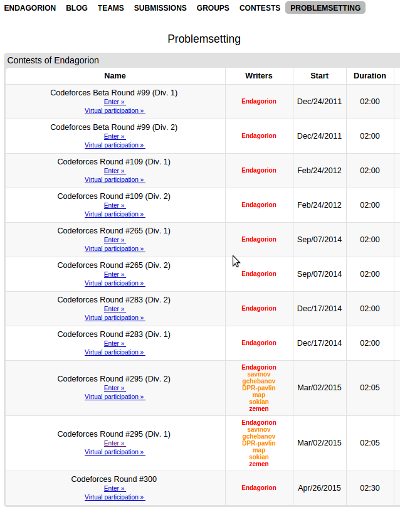Hello, Codeforces!
I'd like to invite you to Codeforces Round #324 (Div. 2). It'll be held on Tuesday, October 6 at 19:30 MSK and as usual Div. 1 participants can join out of competition.
Great thanks to Zlobober (Maxim Akhmedov) for helping me preparing the contest, to Delinur (Maria Belova) for translating the statements into English, to MikeMirzayanov (Mike Mirzayanov) for the Codeforces and Polygon. This is my first round, and, I hope, it won't be the last one.
You will be given five problems and two hours to solve them. The scoring distribution will be announced later.
Characters from problems have their prototypes — my friends, familiars, native, and this round is dedicated to them.
UPD : 500-1000-1500-2000-2500
Good luck and high rating!
UPD2 Round has finished, thanks for participation!
Congratulations to the winners!
1). Siunaus
2). aasddf
3). M_H_M
4). lal
5). femsub
Editorial will be published later
UPD3 Editorial









 used on Codeforces.
used on Codeforces. .
. (
( ), or are important both factors, not just the value of the product (in expressions of type field
), or are important both factors, not just the value of the product (in expressions of type field  ), use the symbol
), use the symbol  (
( (
( (
( (
( (
( (
( =
=  =
=  =
=  =
=  =
=  =
= 

